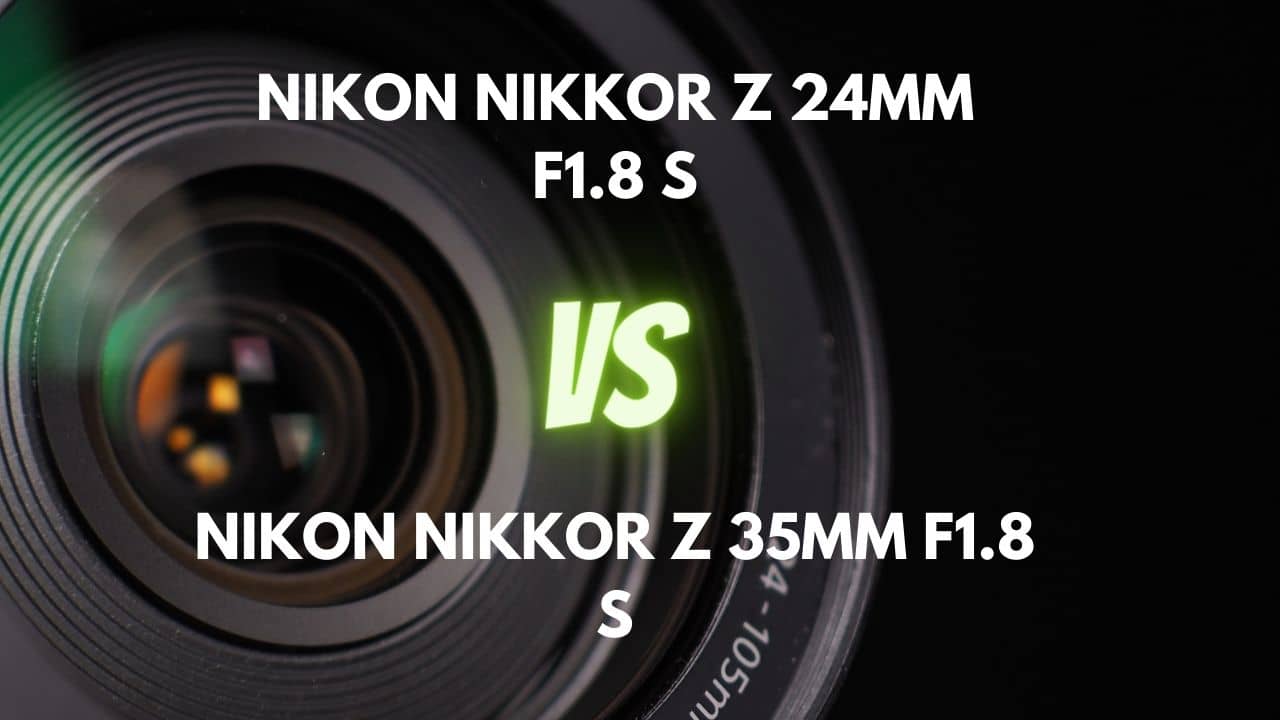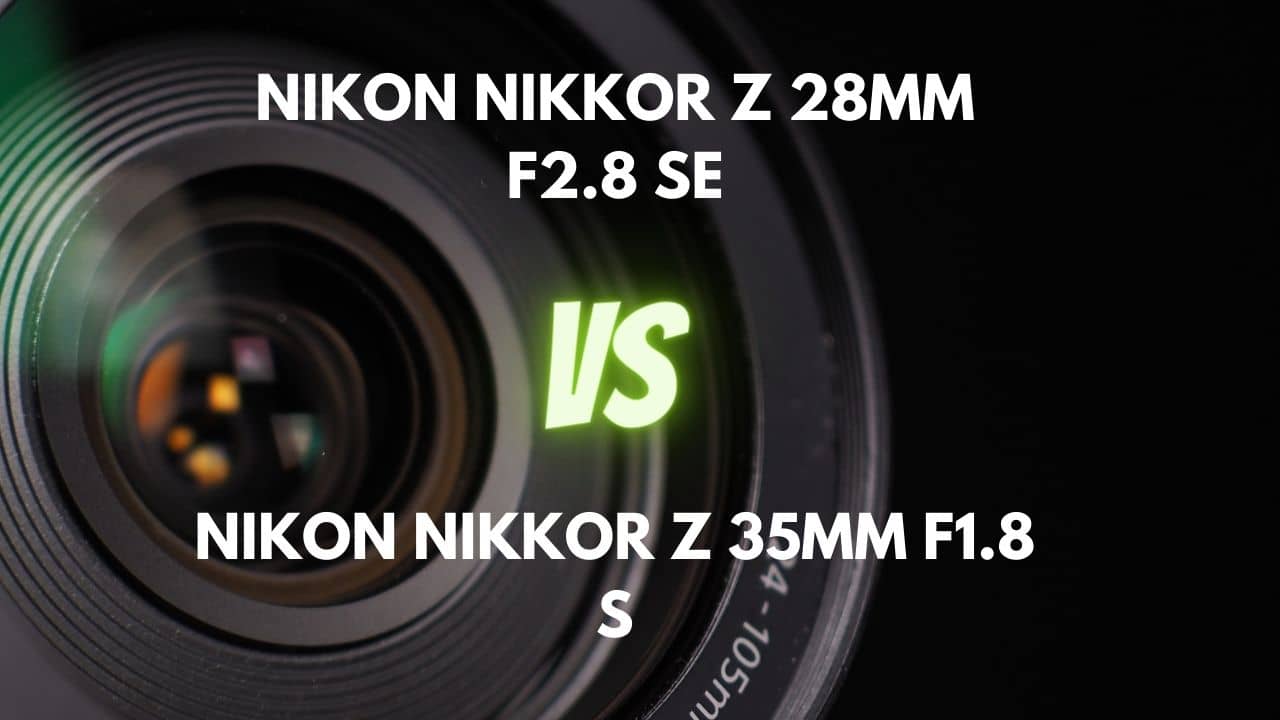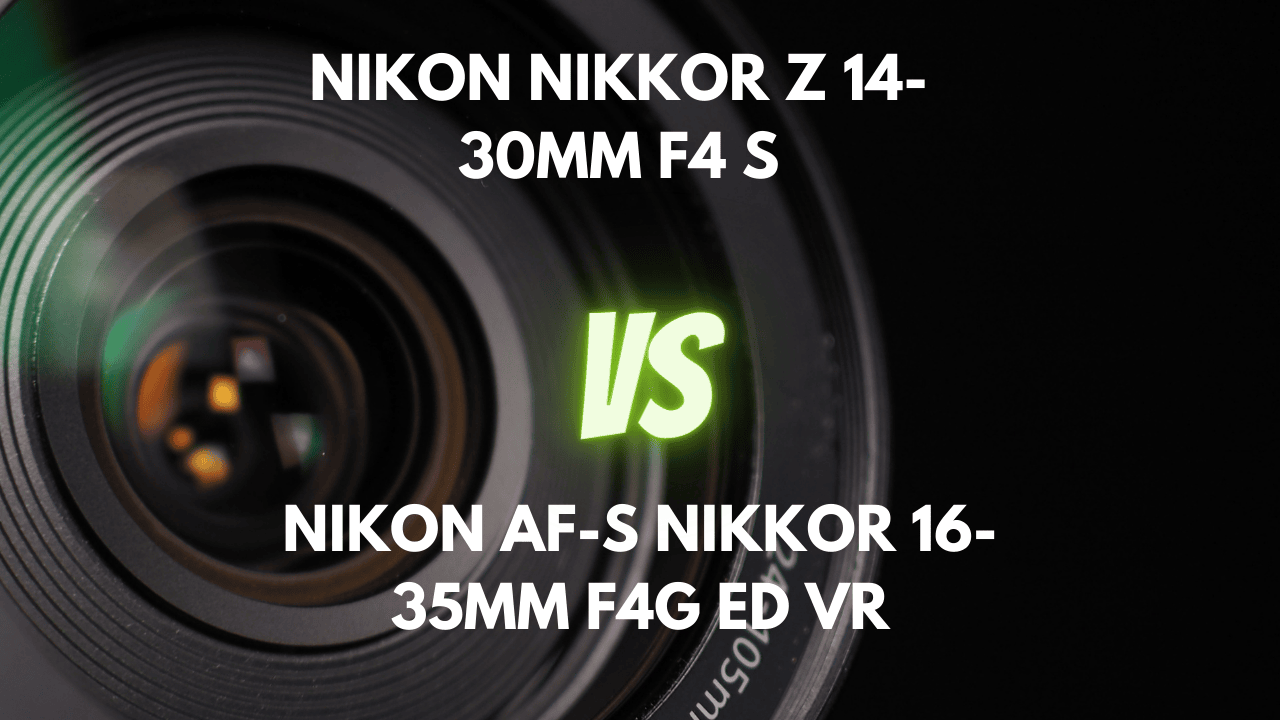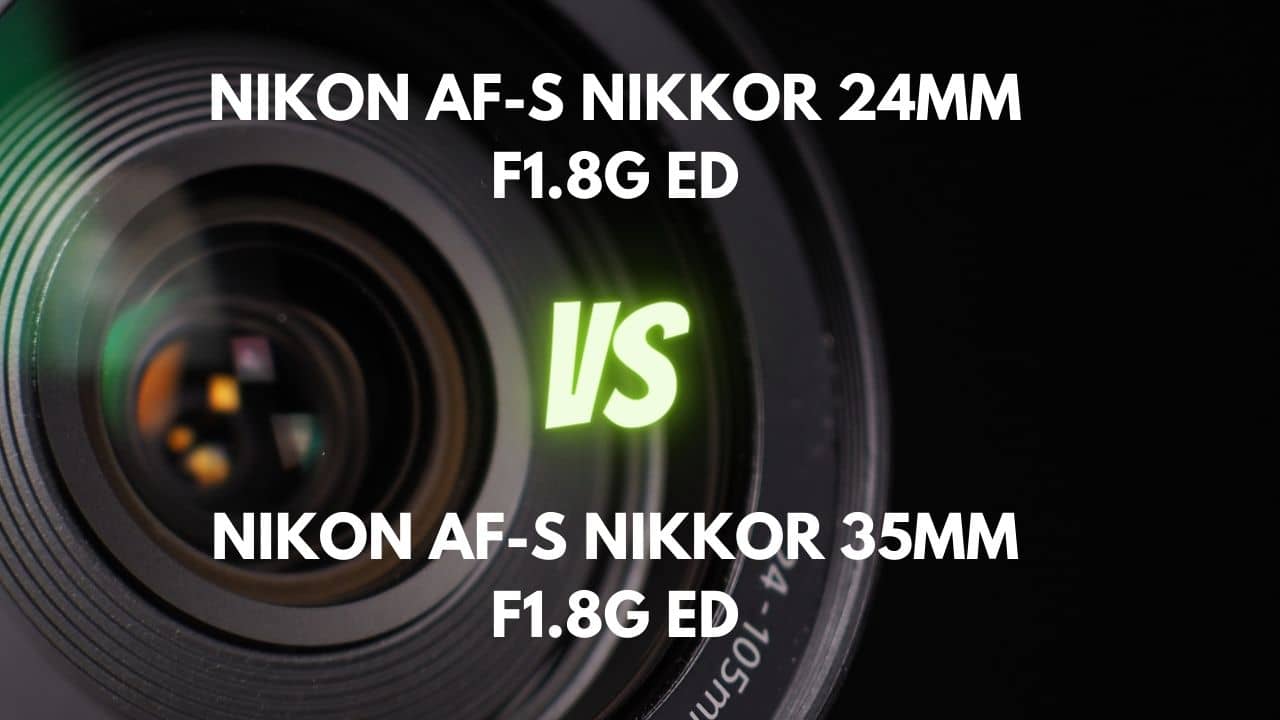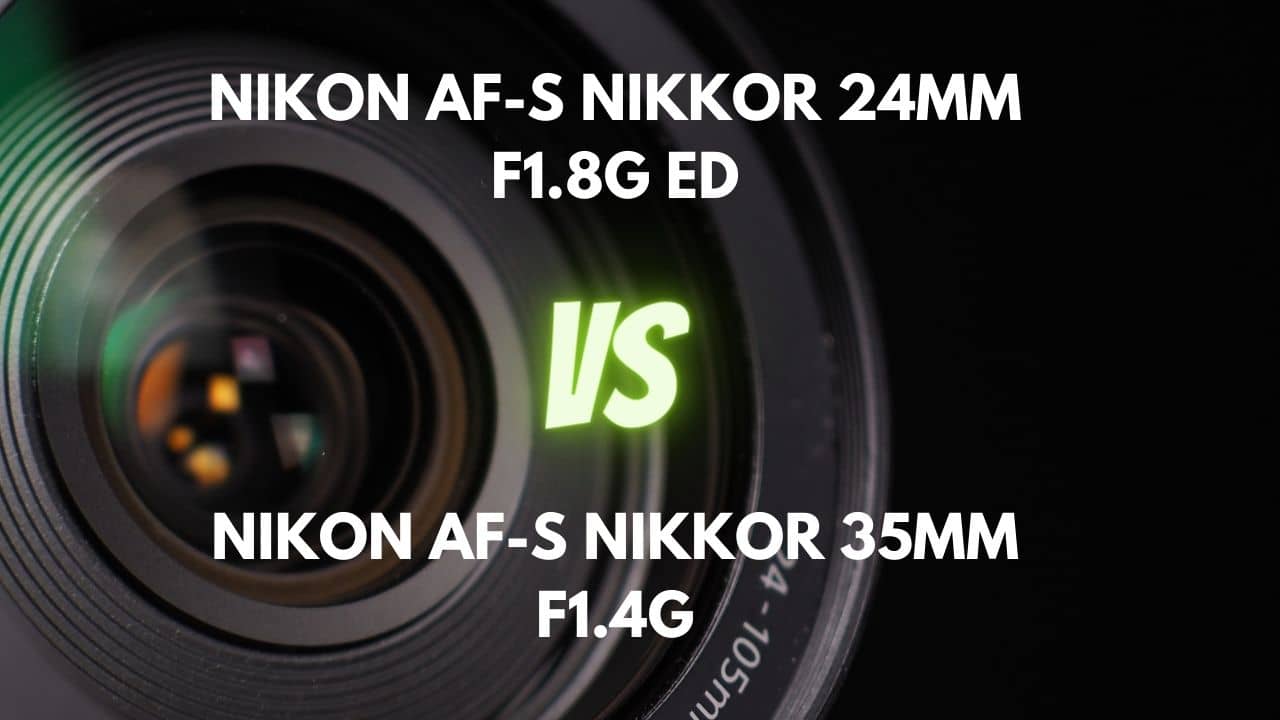Are you a passionate photographer looking to elevate your landscape, architectural, or interior photography game? If so, you’ve come to the right place!
We’re delving into an in-depth comparison of two exceptional wide-angle lenses: the versatile Nikon 17-35mm f/2.8 and the affordable Nikon 18-35mm f/3.5-4.5. As a photographer, you understand the importance of having the right gear to capture stunning images, and a high-quality wide-angle lens can make all the difference.
Wide-angle lenses offer an expanded field of view, allowing you to capture broad, sweeping vistas or intricate architectural details with ease. They also excel in environmental portraiture and close-up photography, where their unique perspective and bokeh qualities can add a creative touch and help separate subjects from the background.
In this article, we’ll compare and contrast the 17-35mm and 18-35mm lenses across various aspects, such as low light performance, sharpness, distortion, vignetting, and more. Once you have a grasp of the advantages and limitations of each lens, you’ll be able to make a knowledgeable choice about which lens is most suitable for your requirements and creative goals.
Whether you’re a seasoned professional looking for an upgrade or an enthusiastic amateur seeking to enhance your photography skills, this comprehensive comparison will provide valuable insights to help you make the right choice.
So, let’s dive in and explore these two remarkable wide-angle lenses that are ready to take your photography to new heights!
Overview
| Nikon AF-S NIKKOR 17-35mm F2.8D IF-ED | Nikon AF-S NIKKOR 18-35mm F3.5-4.5G ED | |
|---|---|---|
| Max Aperture | F2.8 | F3.5-4.5 |
| Aperture Type | Fixed | Variable |
| Focal Range (mm) | 17-35 | 18-35 |
| Max Format | 35mm FF | 35mm FF |
| Zoom Ratio (X) | 2.1 | 1.9 |
The Nikon 17-35mm f/2.8 lens has a fixed maximum aperture of f/2.8, which allows for better low light performance and a shallower depth of field compared to the Nikon 18-35mm f/3.5-4.5 lens, which has a variable maximum aperture of f/3.5-4.5.
This fixed aperture also means that the 17-35mm lens will maintain its maximum aperture throughout the entire zoom range, while the aperture of the 18-35mm lens will change as you zoom in or out.
In terms of focal range, the 17-35mm lens has a slightly wider angle at 17mm and a 2.1x zoom ratio, while the 18-35mm lens has a 1.9x zoom ratio.
In conclusion, the 17-35mm lens is superior in terms of low light performance, making it an excellent choice for professional photographers or those who prioritize these factors.
Design and Ease of Use
| Nikon AF-S NIKKOR 17-35mm F2.8D IF-ED | Nikon AF-S NIKKOR 18-35mm F3.5-4.5G ED | |
|---|---|---|
| Diameter x Length (mm) | ⌀82.5×106mm | ⌀83×95mm |
| Weight (gr) | 745 | 385 |
| Filter Thread (mm) | 77 | 77 |
| Weather Sealing | No | Yes |
| Zoom Method | Rotary (internal) | Rotary (internal) |
| Distance Scale | Yes | Yes |
| DoF Scale | No | No |
| Hood Supplied | Yes | Yes |
| Hood Code | HB-23 | HB-66 |
The Nikon 17-35mm f/2.8 has dimensions of ⌀82.5×106mm and weighs 745 grams, making it larger and heavier compared to the Nikon 18-35mm f/3.5-4.5, which has dimensions of ⌀83×95mm and weighs 385 grams.
This difference in size and weight can impact portability, balance, discreetness, storage, and lens swapping. The larger and heavier 17-35mm lens might be more challenging to carry around and could potentially make your camera setup feel front-heavy and unbalanced. In contrast, the smaller and lighter 18-35mm lens offers greater portability and easier handling, allowing for longer shooting sessions with less fatigue.
Both lenses feature an internal rotary zoom method, meaning the lens doesn’t change its physical size when zooming in or out. This design offers advantages such as maintaining a consistent camera balance while zooming, easier weather sealing, and a more compact overall form factor. However, it may also result in increased complexity and weight compared to extending rotary zoom lenses.
In conclusion, the 18-35mm lens is superior in terms of portability, balance, and discreetness due to its smaller size and lighter weight. This lens would be better suited for photographers who prioritize these factors, especially when shooting in fast-paced environments or traveling.
Lens Mount and Barrel
The Nikon 17-35mm f/2.8 features a metal lens mount with a plastic bayonet and lacks a rubber gasket around the mount. Its lens barrel is also made of metal with a semi-matte black sputtered epoxy paint finish.
This design offers a more premium and professional feel, and the metal construction ensures durability and sturdiness. However, the metal components make the lens heavier, which might affect portability for photographers on the move.
On the other hand, the Nikon 18-35mm f/3.5-4.5 has a metal lens mount with a rubber gasket, providing better protection against dust and moisture. Its lens barrel is primarily constructed from high-quality plastics, with a metal mount and a rubber gasket for added protection. The barrel is finished in Nikon’s mottled black matte finish.
This design is lighter, more portable, and generally more affordable, but it might not be as durable as the metal counterpart. The ergonomic design of the 18-35mm lens is user-friendly, and like the 17-35mm lens, it maintains a constant overall length during zooming due to its internal focusing design.
In conclusion, both lens mounts and barrels have their own advantages and disadvantages. The 17-35mm lens offers a more premium feel and enhanced durability, while the 18-35mm lens provides better portability, affordability, and basic protection against dust and moisture.
If you prioritize durability and a professional appearance, the 17-35mm lens might be the superior choice. However, if you value portability, affordability, and user-friendly design, the 18-35mm lens could be the better option.
Weather Sealing
The Nikon 17-35mm f/2.8 lacks any weather sealing, as there are no gaskets at the lens mount or internal seals at the rings, switches, or front of the barrel. This makes the lens more vulnerable to dust, moisture, and light water splashes, which could potentially impact its durability and performance in various weather conditions.
On the other hand, the Nikon 18-35mm f/3.5-4.5 offers some basic weather sealing in the form of a rubber gasket at the lens mount, which helps reduce the potential ingress of dust and debris. However, it’s important to note that this lens is not fully weather sealed, as there are no internal seals at the rings, switches, or front of the barrel, nor is there a fluorine coating on the front element.
In conclusion, while neither of these lenses is fully weather sealed, the 18-35mm lens provides a superior level of protection compared to the 17-35mm lens, thanks to its rubber gasket at the lens mount. If you frequently shoot outdoor or in unpredictable weather conditions, the 18-35mm lens could offer valuable protection for your equipment. However, if you primarily shoot indoors or in controlled environments, weather sealing might not be a top priority.
Rings
The Nikon 17-35mm f/2.8 features 2 well-designed control rings for zoom and focus, which operate smoothly and provide precise framing and easy manual focusing. The zoom ring is well-spread along the lens barrel, and the focus ring turns continuously without any play. Both rings are ergonomically beveled, and there is no zoom creep. A windowed distance scale is also present for added convenience.
In contrast, the Nikon 18-35mm f/3.5-4.5 has 2 rings with different widths and textures for zoom and focus. The zoom ring is approximately 1/2” wide with deep rubber ribs and requires only slight force to move through its range of focal lengths.
The manual focus ring, which is approximately one inch wide, has a distinct texture and is equipped with gentle stops at both the closest focus and slightly beyond infinity. Although both rings offer a well-damped and smooth tactile experience, the focus ring feels somewhat plasticky and has some slack/play, making accurate manual focus more challenging when shooting wide open. A windowed distance scale is also included between the two rings.
In conclusion, the 17-35mm lens has superior ring design and operation compared to the 18-35mm lens. Its ergonomic beveling, smooth operation, and absence of play in the focus ring make it an excellent choice for photographers who prioritize precision and control. While the 18-35mm lens offers a decent ring design, its focus ring’s plasticky feel and slack/play may make manual focusing less accurate and more difficult, especially when shooting wide open.
Switches/Buttons
The Nikon 17-35mm f/2.8 features an AF/MF switch, which is labeled as “M/A – M.” The “M/A” position indicates autofocus, while still allowing manual focus adjustments without switching the lens to manual focus mode. Apart from this, there are no other switches or buttons on the lens.
On the other hand, the Nikon 18-35mm f/3.5-4.5 has a single switch for enabling or disabling autofocus, marked as “M” and “M/A.” This switch is easy to locate and use, and the lens also allows manual-focus override when the switch is in the “M/A” position. Similar to the 17-35mm lens, there are no other switches or buttons on this lens.
Filter Thread
The Nikon 17-35mm f/2.8 boasts a metal 77mm filter thread, a popular and versatile size that offers wide compatibility with filters. This includes the Hoya multicoated HD3 UV filter, which efficiently repels dirt and fingerprints.
Metal filter threads are more durable and long-lasting compared to plastic, making them suitable for professional-grade lenses. Additionally, the front element and filter thread of the 17-35mm lens do not rotate during focusing, simplifying the use of filters.
On the other hand, the Nikon 18-35mm f/3.5-4.5 features a 77mm filter thread that also doesn’t rotate during focusing. This design makes it convenient to use with graduated filters and polarizers.
Both lenses benefit from the 77mm filter thread size, which strikes a good balance between compatibility, availability, and cost. This common size allows for easier sharing of filters among lenses and finding the filters you need at a reasonable price. Using a step-up ring is an option if you want to use filters with a larger diameter than the lens’s filter thread size.
In conclusion, the 17-35mm lens holds a slight edge due to its metal filter thread construction. However, both lenses offer the advantages of a 77mm filter thread size and non-rotating design.
Lens Hood
The Nikon 17-35mm f/2.8 includes a HB-23 plastic bayonet hood in the package, featuring a matte black sputtered epoxy paint finish over alloy. Its simple beveled design does not have a scalloped shape, which may not be as visually appealing as petal-shaped hoods. Although the hood cannot be smoothly rotated, it is easy to attach and detach from the lens. Bayonet mounts offer quick installation and removal, secure attachment, and are less likely to accidentally fall off.
In contrast, the Nikon 18-35mm f/3.5-4.5 comes with the Nikon HB-66 plastic bayonet hood. This petal-shaped hood can be reversed for storage and sits securely once attached without wobbling. Its smooth interior allows for easy rotation when needed. Petal-shaped hoods tend to be more aesthetically pleasing and can provide better protection against flare and extraneous light entering the lens.
Both lens hoods are made of plastic, offering lightweight protection for the front lens element against impacts, dust, and moisture. However, ribbed lens hoods may provide better grip and handling, better light reflection prevention, and increased durability and stability compared to non-ribbed hoods.
In conclusion, the 18-35mm lens hood, Nikon HB-66, stands out as the superior option due to its petal-shaped design, secure attachment, and smooth rotation. While both hoods utilize a bayonet mount for easy attachment and removal, the aesthetic and functional advantages of the 18-35mm lens hood make it a more appealing choice.
Focusing and Optical Stabilization
| Nikon AF-S NIKKOR 17-35mm F2.8D IF-ED | Nikon AF-S NIKKOR 18-35mm F3.5-4.5G ED | |
|---|---|---|
| Autofocus | Yes | Yes |
| AF Motor | Silent Wave Motor | Silent Wave Motor |
| Rotating Front Element | Does not rotate on focusing | Does not rotate on focusing |
| Min Focus Distance | 0.28m | 0.28m |
| Max Magnification (X) | 0.22 | 0.2 |
| Full-Time Manual Focus | Yes | Yes |
| Focus Method | Internal | Internal |
Focusing Performance
The Nikon 17-35mm f/2.8 features a Silent-Wave Drive autofocus system, delivering near-silent and exceptionally fast focusing performance. It produces minimal noise and offers almost instantaneous focusing speed.
The focus accuracy is excellent, and manual focus is easy and precise. The lens boasts an internally focusing design, which keeps its length constant during focusing. The manual focus action is smooth and continuous, and it includes a manual focus override function.
In comparison, the Nikon 18-35mm f/3.5-4.5 offers quick and silent autofocus performance, thanks to its AF-S drive. It also provides manual focus override and a smooth focus action. The lens takes approximately one second to focus from the closest distance to infinity and exhibits some focus breathing at very close distances.
The lens maintains a constant length during focusing and zooming. In low-light situations, the autofocus performance is comparable to the Nikon 16-35mm VR and remains reliable and accurate in good lighting conditions.
Both lenses offer impressive focusing performance, with the 17-35mm lens slightly outperforming the 18-35mm due to its near-silent and extremely fast Silent-Wave Drive autofocus system. While manual focus is useful for both wide-angle and telephoto lenses, the 17-35mm lens has a smoother manual focus action and manual focus override function.
Optical Stabilization
Both the Nikon 17-35mm f/2.8 and Nikon 18-35mm f/3.5-4.5 do not have optical stabilization. While optical stabilization may not be as critical for wide-angle lenses as it is for telephoto lenses, there are still specific scenarios where it can be advantageous, such as capturing handheld shots in low-light settings, using slower shutter speeds, or filming video.
Many modern cameras offer in-body image stabilization (IBIS), which can work effectively with wide-angle lenses to minimize camera shake, even if the lens itself lacks built-in optical stabilization. If your camera has IBIS, the need for optical stabilization in a wide-angle lens becomes less critical.
When using wide-angle lenses for common applications like landscape and interior photography, a tripod is often a more effective tool for ensuring stability and sharpness, making optical stabilization less of a priority.
Additionally, in environmental photography or other handheld shooting scenarios, a fast lens with a larger aperture may be a more cost-effective solution for capturing sharp images than relying solely on optical stabilization.
Image Quality
| Nikon AF-S NIKKOR 17-35mm F2.8D IF-ED | Nikon AF-S NIKKOR 18-35mm F3.5-4.5G ED | |
|---|---|---|
| Special Elements | 3 ASPH | 2 ED glass elements, three aspherical elements |
| Diaphragm Blades | 9 | 7 |
| Circular Aperture | Yes | Yes |
Aberration
The Nikon 17-35mm f/2.8 exhibits well-controlled chromatic aberration and minimal coma. Coma is only noticeable as smeared blobs around bright points of light in the corners when the lens is wide open at 17mm, but it disappears by f/5.6.
On the other hand, the Nikon 18-35mm f/3.5-4.5 demonstrates excellent control over chromatic aberration. Lateral chromatic aberration is relatively moderate at 18mm and decreases further at 35mm, while longitudinal chromatic aberration is well-managed. Additionally, there is no noticeable coma in the 18-35mm lens, even on a 36 MP camera, and it does not suffer from spherical aberration.
In conclusion, the 18-35mm lens offers superior aberration control compared to the 17-35mm lens. The 18-35mm lens effectively manages both chromatic aberration and coma, resulting in higher image quality across its focal length range.
Sharpness
The Nikon 17-35mm f/2.8 generally boasts impressive sharpness, even when wide open. However, the corners tend to struggle on large FX sensors at the short end of the zoom range. Stopping down improves corner sharpness considerably, yielding excellent results. At 35mm, this lens delivers sharpness even in the corners at f/2.8, although diffraction limits performance at f/16 and f/22. The lens reaches peak sharpness across the frame when stopped down to f/5.6 or longer focal lengths, with the sharpest aperture typically ranging from f/4 to f/8.
In contrast, the Nikon 18-35mm f/3.5-4.5 exhibits varying sharpness levels depending on the focal length and aperture. While center sharpness remains consistently good across all focal lengths and apertures, corner sharpness may be weaker at wider apertures and longer focal lengths. As the aperture is stopped down, corner sharpness improves. However, diffraction can limit sharpness at smaller apertures. Overall, this lens is quite sharp, but certain trade-offs must be made depending on shooting conditions.
In conclusion, the 17-35mm lens offers superior sharpness compared to the 18-35mm lens. Its ability to maintain sharpness across a wider range of aperture settings, combined with its excellent corner sharpness when stopped down, makes it an ideal choice for photographers seeking consistently sharp images throughout the frame.
Bokeh Quality
The Nikon 17-35mm f/2.8 produces fairly good and realistic bokeh, which ranges from neutral to good at ordinary distances when stopped down to 17mm. At closer than 2 feet at 35mm, the bokeh appears very neutral. While not explicitly described as “smooth and beautiful,” the overall impression of the bokeh is positive and aligns with expectations for a professional-grade lens.
Conversely, the Nikon 18-35mm f/3.5-4.5’s smaller maximum aperture and shorter focal length range mean that it does not produce remarkable bokeh, leading to a greater depth of field. When using the widest aperture of f/4.5 at the longest focal length of 35mm, the bokeh is acceptable, but achieving subject isolation is difficult unless the subject is in close proximity.
In conclusion, the 17-35mm lens offers superior bokeh quality compared to the 18-35mm lens. While bokeh may not be the primary concern for wide-angle lenses, the 17-35mm lens provides more pleasing and neutral bokeh, which can add a creative touch and help separate subjects from the background in certain situations, such as environmental portraits or close-up photography.
Flare/Ghosting
The Nikon 17-35mm f/2.8 boasts excellent resistance to flare and ghosting, which is attributed to its use of aspherical elements. This lens performs as well as, or even better than, fixed ultra-wide lenses in this regard. Shooting directly into the sun poses no issues, and if any magenta spots are visible in the viewfinder, they can easily be blocked with your hand. The included plastic bayonet hood further helps to reduce any potential flare or ghosting.
On the other hand, the Nikon 18-35mm f/3.5-4.5 features a super integrated coating that effectively reduces ghosting and flares, even when shooting against the sun. The level of ghosting and flare is contingent upon the placement of the sun or bright object and the chosen focal length. At 18mm, flare is practically non-existent, while some visible ghosts and brighter spots might appear in certain conditions.
In conclusion, both lenses demonstrate impressive flare and ghosting resistance. The 17-35mm lens has a slight edge due to its aspherical elements and the included bayonet hood, which contribute to its exceptional performance even when compared to fixed ultra-wide lenses. However, the 18-35mm lens also performs admirably, particularly at its widest focal length. Both lenses are solid choices when it comes to minimizing flare and ghosting.
Vignetting
The Nikon 17-35mm f/2.8 displays pronounced vignetting, particularly at the wide end of the zoom range. However, stopping down can reduce it to less noticeable levels. At 17mm, minor vignetting may still be visible at f/2.8. It is important to note that this vignetting analysis was based on uncorrected JPEGs straight from the camera. Additionally, the lens performs well with filters and shows no vignetting on DX cameras.
On the other hand, the Nikon 18-35mm f/3.5-4.5 displays pronounced vignetting at 18mm and fully open at f/3.5, although this can be mitigated by stopping down to f/5.6 or utilizing a narrow polarizing filter. Additionally, zooming in to 24mm or 35mm can also help to decrease vignetting. However, when stopped down or at other focal lengths, the vignetting is not significant.
Distortion
The Nikon 17-35mm f/2.8 displays some distortion, particularly at the 17mm end where barrel distortion is present. However, this distortion is not a major concern and is actually better than other lenses in its class. The distortion remains consistent across all distances, which is an advantage over some fixed focal length lenses where distortion worsens at close distances. While software can be used to correct the distortion, the results may not be perfect due to the complexity of some of the distortion patterns.
In contrast, the Nikon 18-35mm f/3.5-4.5 exhibits barrel distortion as well, especially at the widest focal length of 18mm, with a maximum distortion of 4.78%. As you zoom in, the distortion reduces; at 24mm, there’s still a modest amount of barrel distortion, while at 35mm, distortion becomes minimal. The distortion pattern is uniform at either end of the zoom range, making it easier to apply corrections in image editing software. However, without in-camera correction, manual correction in post-processing is necessary to avoid curvy lines.
In conclusion, both lenses exhibit some degree of distortion, with the 17-35mm lens having a slight advantage due to its consistent distortion across distances and comparatively better performance than other lenses in its class. The 18-35mm lens has more pronounced distortion at its widest focal length, but distortion reduces as you zoom in.
Final Verdict
After comparing the two lenses across various aspects, it is evident that both the Nikon 17-35mm f/2.8 and Nikon 18-35mm f/3.5-4.5 have their own strengths and weaknesses.
The 17-35mm lens excels in low light performance, sharpness, bokeh quality, flare/ghosting resistance, and distortion control, making it an excellent choice for professional photographers or those who prioritize these factors. It also offers a more premium feel and enhanced durability.
On the other hand, the 18-35mm lens is superior in terms of portability, balance, discreetness, and aberration control due to its smaller size, lighter weight, and better chromatic aberration and coma management. This lens would be better suited for photographers who prioritize these factors, especially when shooting in fast-paced environments or traveling.
It also provides better portability, affordability, and basic protection against dust and moisture. Additionally, the 18-35mm lens has impressive flare and ghosting resistance, although it does exhibit more noticeable vignetting at wider focal lengths.
Given that the 18-35mm lens is much cheaper, it is a compelling option for those who value affordability, portability, and user-friendly design. However, if you are willing to invest more in a lens that provides superior image quality, low light performance, and durability, the 17-35mm lens may be the better choice.

